The Accurion EP4, the latest imaging ellipsometer, integrates ellipsometry with microscopy to precisely characterize the thickness and refractive index of microstructures as small as 1 µm. Unlike traditional ellipsometers, it measures all structures within the field of view simultaneously.
The EP4 provides ellipsometric-contrast live view, enabling the detection of sub-nanometer features and the identification of regions of interest for acquiring thickness measurements and 3D maps (ranging from 0.1 nm to 10 µm), as well as refractive index data. Optional accessories are available to extend measurements under controlled environments or varying temperatures.
The Microscopic Way of Doing Ellipsometry
Simultaneous Measurement of All Pixels Inside the Field of View
Pixel-level spectroscopic ellipsometry
Highest Lateral Ellipsometric Resolution
Microstructures down to 1 µm can be measured to determine thickness and refractive index.
First Identify, Then Measure
Drawing regions directly on the live ellipsometric display enables the intuitive selection of measurement areas.
Continuous Spectroscopic Imaging Ellipsometry
Operates across the UV–NIR spectrum
Key Features
- The highest lateral ellipsometric resolution of 1 µm enables thickness and refractive index estimation on microstructures as small as 1 µm.
- Simultaneously measuring all pixels within the field of view provides spectroscopic ellipsometry for each pixel.
- Parallel measurement of multiple locations within the selected field of view.
- Imaging spectroscopic ellipsometry from 190/250/360 nm to 1000/1700/2700 nm.
- Ellipsometrically enhanced contrast images offer live visualization of the sample.
- Measurement region selection is intuitive by drawing a region in live view, allowing for easy identification and measurement.
- Expand measurement capabilities with additional accessories, such as cells, temperature control, or liquid handling.
- Knife-edge lighting suppresses unwanted backside reflections in a non-destructive manner.
- Quality control: Also available as an OEM version for use in product line QC.
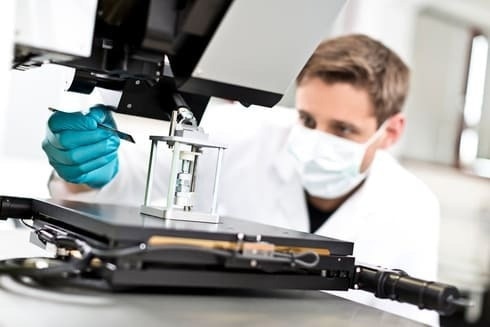
Image Credit: Park Systems
Accurion EP4 Introduction
The EP4, the latest generation of imaging ellipsometers, integrates ellipsometry with microscopy, enabling precise measurement of thickness and refractive index for microstructures as thin as 1 µm.
Accurion EP4 | Our Latest Generation of Imaging Ellipsometers Combines Ellipsometry and Microscopy
Video Credit: Park Systems
EP4 Software
The EP4 software is modular, offering both direct control and parallel or offline analysis. The EP4 control manages the instrument, allowing measurement regions to be selected in the live display. Multiple samples can be arranged and measured automatically. DataStudio processes recorded data, with histogram analysis and line profiles providing detailed insights into the sample’s characteristics.
The EP4 model enables sample modeling with an intuitive interface that allows users to design thin film sample structures, from simple to complex. It provides data on the sample's thickness and refractive index, and can also retrieve additional physical properties, such as the bandgap or volume fraction of mixed material layers.
Accurion EP4 modelling software | Park Systems
Video Credit: Park Systems
Applications
2D-Materials
Graphene and other 2D materials are characterized using imaging spectroscopic ellipsometry, with the EP4 ellipsometer analyzing CVD-grown, exfoliated, and epitaxially formed flakes.
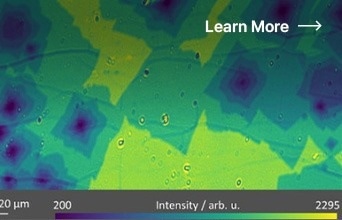
Image Credit: Park Systems
Curved Surfaces
Ellipsometry measures AR coatings and thin films on both curved and flat surfaces. AR coating issues on micro-lens arrays are addressed by the ep4 ellipsometer.
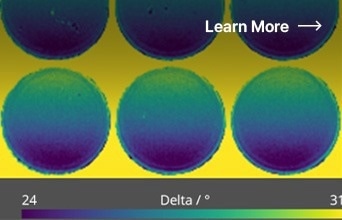
Image Credit: Park Systems
Transparent Substrate
For flexible displays, thin films on transparent substrates are essential. By suppressing reflections, knife-edge lighting enables non-destructive inspection.
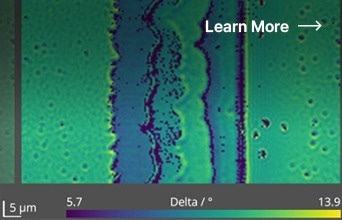
Image Credit: Park Systems
Surface Engineering
Paints and adhesives containing organic and mineral/inorganic components are silanized. Bond formation is investigated using imaging ellipsometry in structured arrays without fluorescence markers.

Image Credit: Park Systems
Air-Water Interface
The contact between air and water is essential to industry and biology. Brewster angle microscopy (BAM) examines chemicals, proteins, medications, DNA, and nanoparticles by visualizing Langmuir-Blodgett monolayers and biological materials.
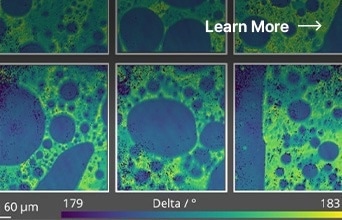
Image Credit: Park Systems
Anisotropic Films
For electronics, anisotropic microcrystals have promise. Refractive indices and optical axis orientation are measured using Imaging Mueller Matrix Ellipsometry (IMME) in anisotropic thin-film materials such as Black Phosphorus.
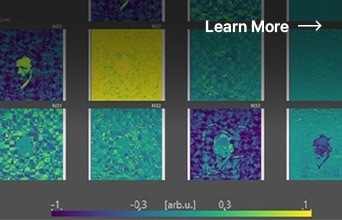
Image Credit: Park Systems
Bio Interfaces
Imaging Ellipsometry (IE) offers high sensitivity for mono- and sub-monolayer thickness. It provides ellipsometric angle microamps and a contrast mode for variations in thickness. Accessories such as cells and QCM-D enhance its biological application capabilities.
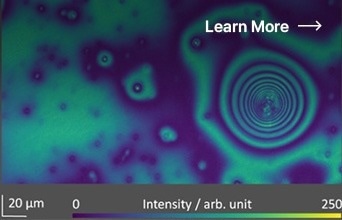
Image Credit: Park Systems
MEMS
Spectroscopic ellipsometry has a resolution of 0.1 nm for film thickness and can measure MEMS structures as small as 1 µm. Thickness, refractive index, composition, and contaminants are all provided in a single measurement. ECM mode enables quick measurements of curved surfaces and quality control.
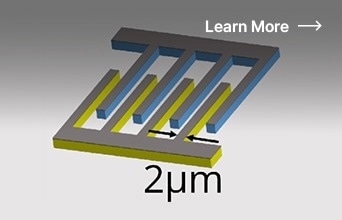
Image Credit: Park Systems
Photonics
Spectroscopic ellipsometry can measure optical fibers and waveguides with resolutions of 1 µm lateral and 0.1 nm thickness. It provides optical data and quick quality control in the range of 190 nm to 1700 nm, with an extension to 2700 nm available.
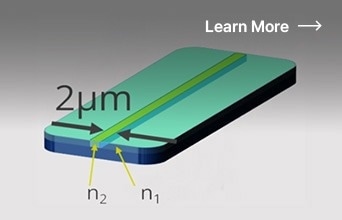
Image Credit: Park Systems
Displays
Spectroscopic observations on micron-scale regions employ the ROI concept to do numerous measurements in a single run. Display materials are characterized by a UV range of 190 nm and below. A single measurement delivers thickness, dispersions, and compositions, with RCE6 mode allowing tact durations of less than 20 seconds.
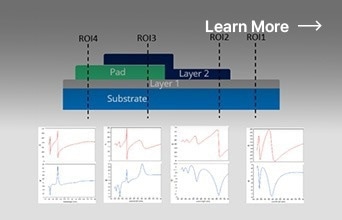
Image Credit: Park Systems
Battery Materials
Operando Imaging Ellipsometry measures microscopic Delta and Psi maps of battery electrode materials as they charge and discharge. It gives data from multiple regions, including post-processing analysis such as profiles, sub-regions, and histograms.
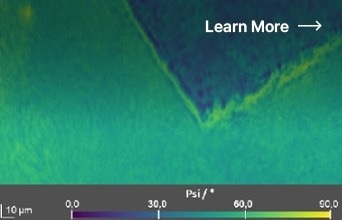
Image Credit: Park Systems